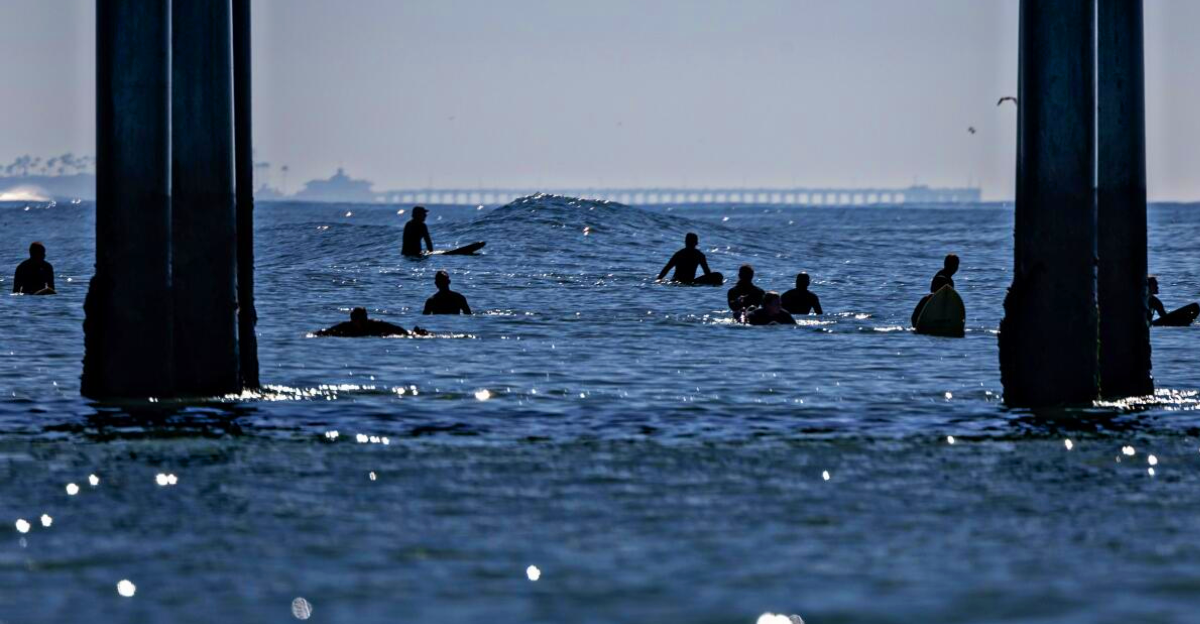
For many people, sharks might be their worst fear. I mean, who hasn’t seen Jaws before? Well, most of the time, this is a completely irrational fear, but if you happen to be on the East Coast, you should keep an eye out. The largest great white shark ever recorded, Contender, has been spotted in the region, placing popular beaches on high alert.
After weeks of silence from his satellite tag, Contender’s sudden reappearance signals the start of the great white’s seasonal migration northward, a journey that could span over 1,000 miles and bring him into proximity with some of the East Coast’s busiest vacation spots.
Who is Contender?
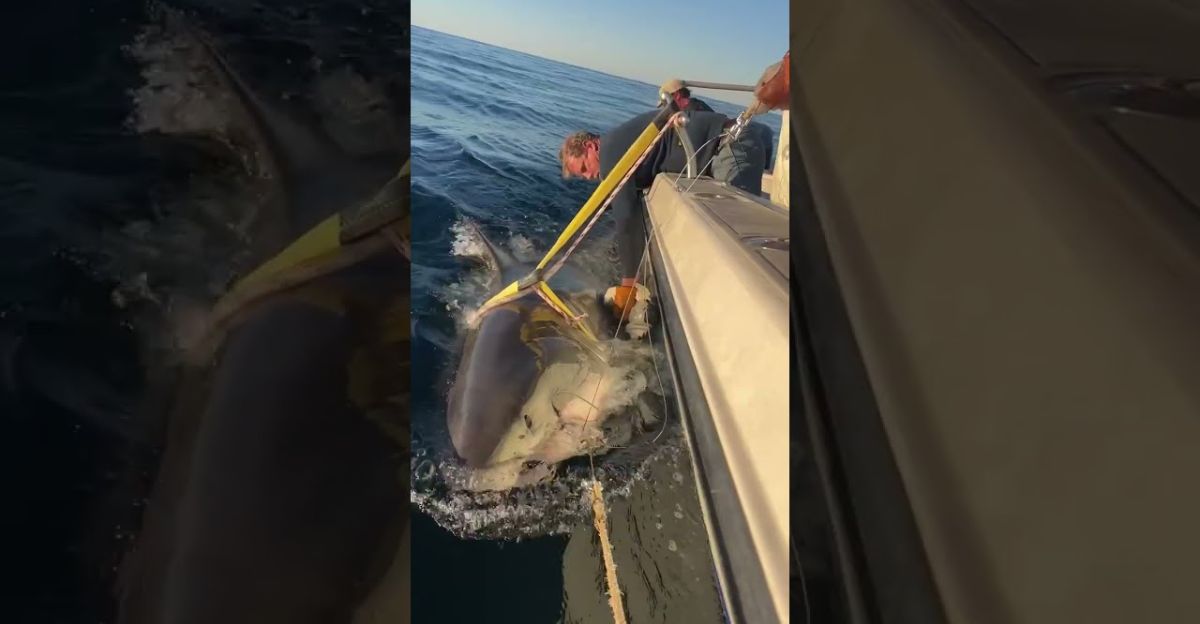
Contender is the largest male great white shark ever tagged in the Western North Atlantic. He measures nearly 14 feet in length and weighs approximately 1,653 pounds. OCEARCH researchers tagged him on January 17, 2025, about 45 miles off the Florida-Georgia coast.
“Male white sharks are mature at around 11.5 feet and 26 years of age, so Contender at 14 feet is an adult male probably in his early 30’s and early in his reproductive life. He is an important part of the effective breeding population and will hopefully contribute to the rebuilding of the western North Atlantic white shark population,” said Dr Harley Newton, OCEARCH’s chief veterinarian and senior veterinary scientist.
Tracking This Giant Through The Ocean

After being tagged by OCEARCH researchers in January, his movements are monitored in near real-time using advanced satellite technology. He is fitted with a SPOT tag on his dorsal fin, which sends GPS location data to satellites whenever he surfaces, and a PSAT tag that records information about his underwater journeys, such as depth and temperature preferences.
“Although we have tagged and released a number of sharks as part of this project, animals of adult size have proven elusive,” said Newton. These tags help researchers track these remarkable sharks for up to five years and have already tracked over 1,800 miles since his tagging.
A Route Through Tourist Hotspots

While it may not be ideal, Contender has decided to take a detour on the scenic route and stop by some tourist hotspots on his way to his final destination. After spending the winter months in warmer southern waters, Contender has resurfaced near North Carolina’s Pamlico Sound. “It only provides locations when the shark is at the surface but Contender seems to be a shark that spends time there every few days so we hear from him regularly,” said Dr Newton.
Due to the abundance of marine life, the Outer Banks is a popular stopover for great white sharks. It’s a prime feeding ground before they journey north to cooler, prey-rich waters off the northeastern U.S. and Canada.
Seasonal Migration Patterns
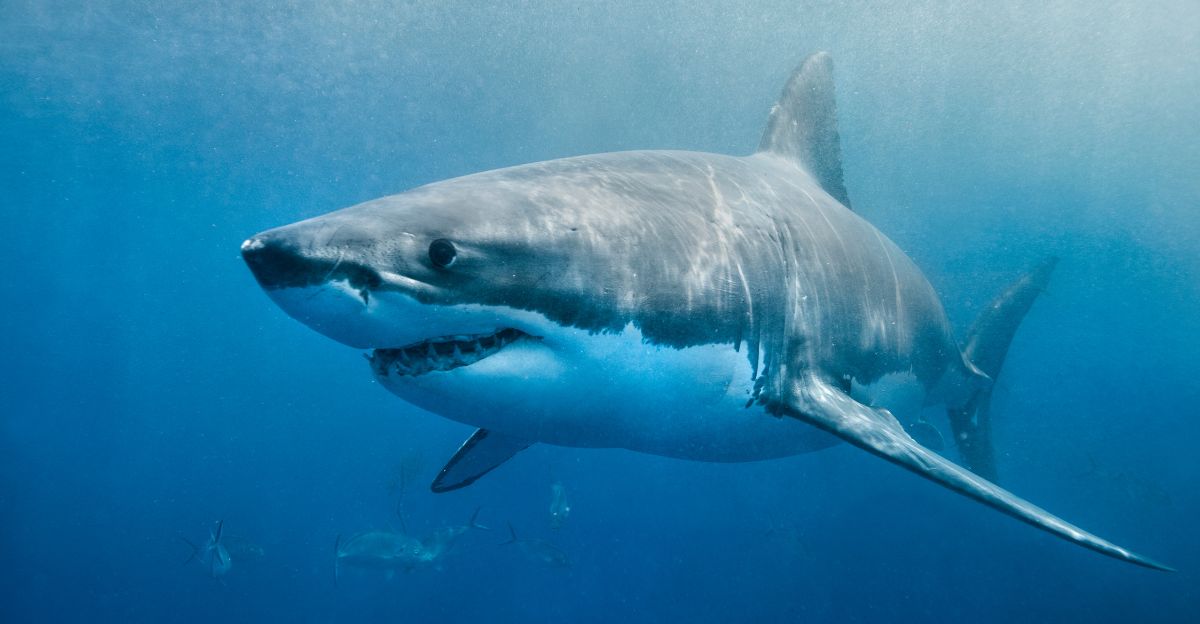
Great white sharks follow the same seasonal migration patterns, looking for more comfortable water temperatures and more prey on which to feed. In the spring and summer, these predators migrate northward from the warmer waters of Florida and the southeastern United States to the cooler, prey-rich coastal regions of New England and Atlantic Canada, where they feed on seals and other marine life.
As autumn approaches and ocean temperatures drop, the sharks begin their southward journey, returning to the warmer waters of the southeast U.S. and the Gulf of Mexico to spend the winter months.
Public Safety Measures In Place

To make sure that beachgoers are safe in the water, local authorities and beach managers have implemented a series of public safety measures to protect them. Lifeguards closely monitor the shoreline, and temporary beach closures or swimming bans are enacted immediately after confirmed shark sightings. “They’re not out there actively looking for humans. They’re looking for the typical prey they would want to eat,” said Dr Newton.
Swimmers are encouraged to stay close to shore, avoid wearing shiny jewelry, and never swim alone, as groups are less likely to attract sharks.
Expert Advice on Shark Encounters
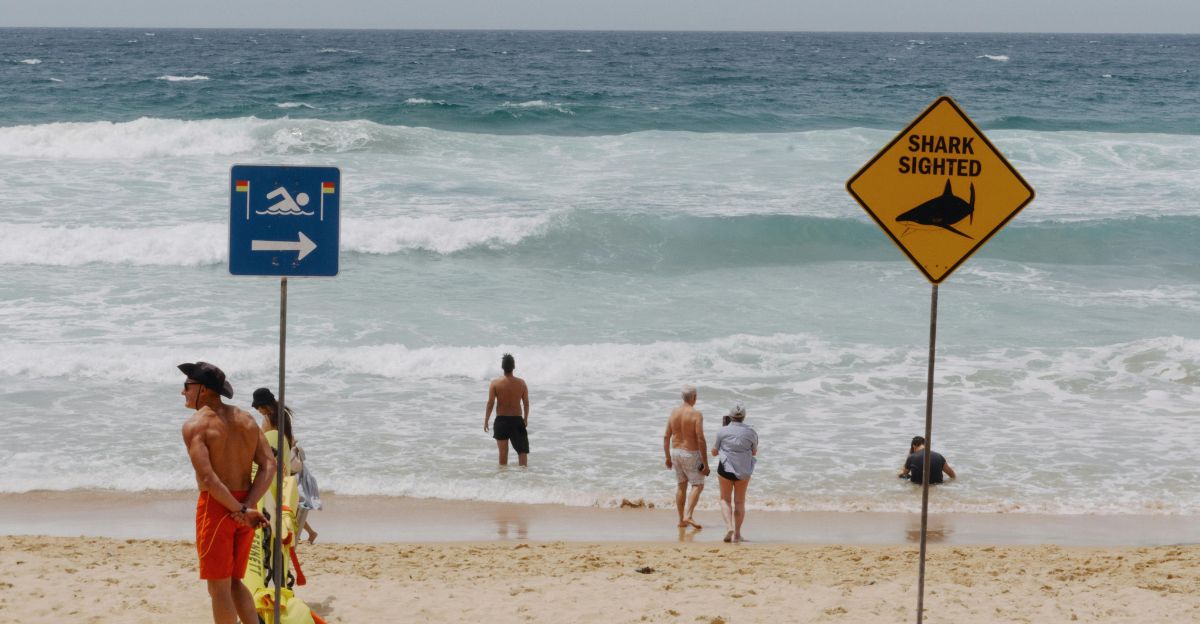
Experts emphasize that staying calm is the most important thing to do if encountering a shark in the water. Sudden movements, splashing, or panicking can attract unwanted attention, as sharks are drawn to erratic behavior that mimics struggling prey.
“If you see schools of fish, particularly if they’re jumping out of the water, that might be something that you want to move away from because that’s going to be very attractive for sharks, and it might help you avoid an accident or an incident,” said Dr Newton.
Why Track Great Whites?
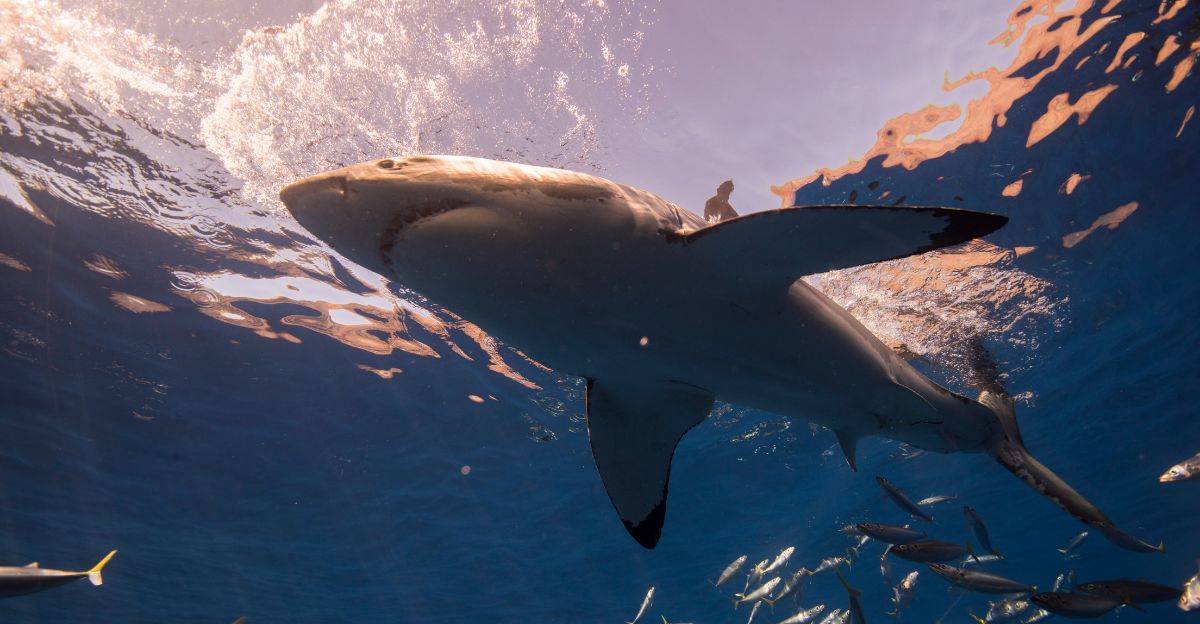
Researchers can better understand their migration patterns, habitat use, and population dynamics by tagging and monitoring these apex predators. This helps pinpoint necessary feeding, mating, and nursery areas vital for the species’ survival.
“We hope that Contender along with the other 94 sharks we have tagged and released as part of the western North Atlantic white shark project will add to what we know about white sharks’ movements and habitat use in this part of the Atlantic Ocean and assist in conservation and policy efforts for white sharks and other North Atlantic shark species,” she added.
The Role of Great Whites in the Ecosystem
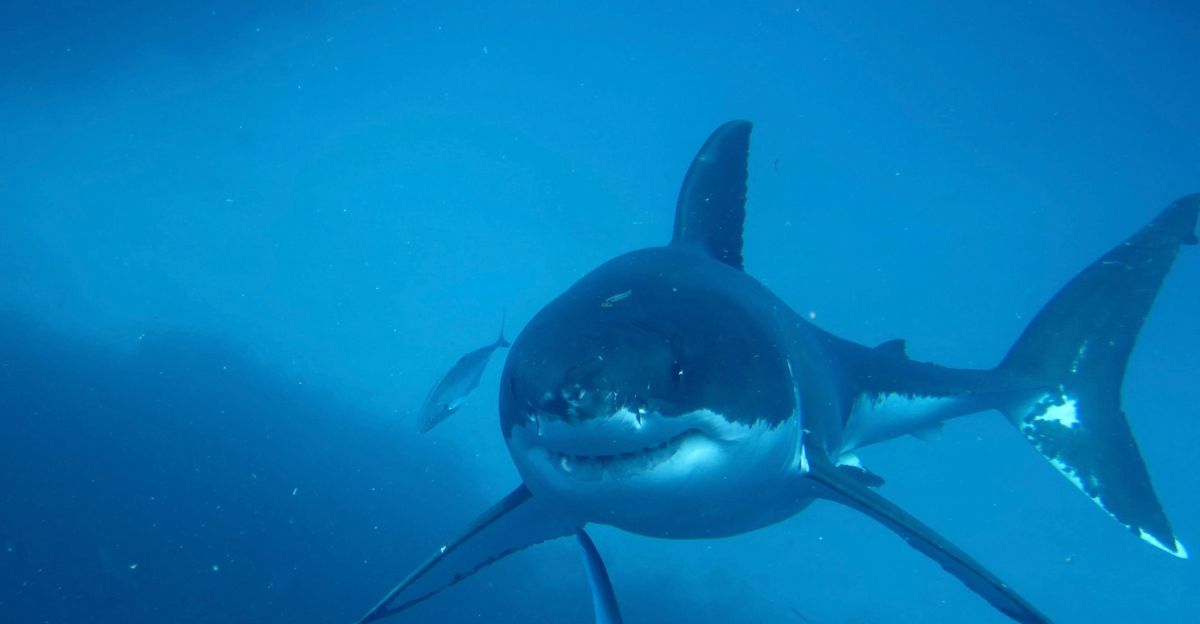
You might think these sharks roam the ocean for their next snack, but they play a big role in the ecosystem.
“Sharks play a vital role in maintaining healthy ocean ecosystems, and with some simple precautions, we can safely enjoy the water while respecting these magnificent animals that have been evolving for over 400 million years.”
Conservation Challenges
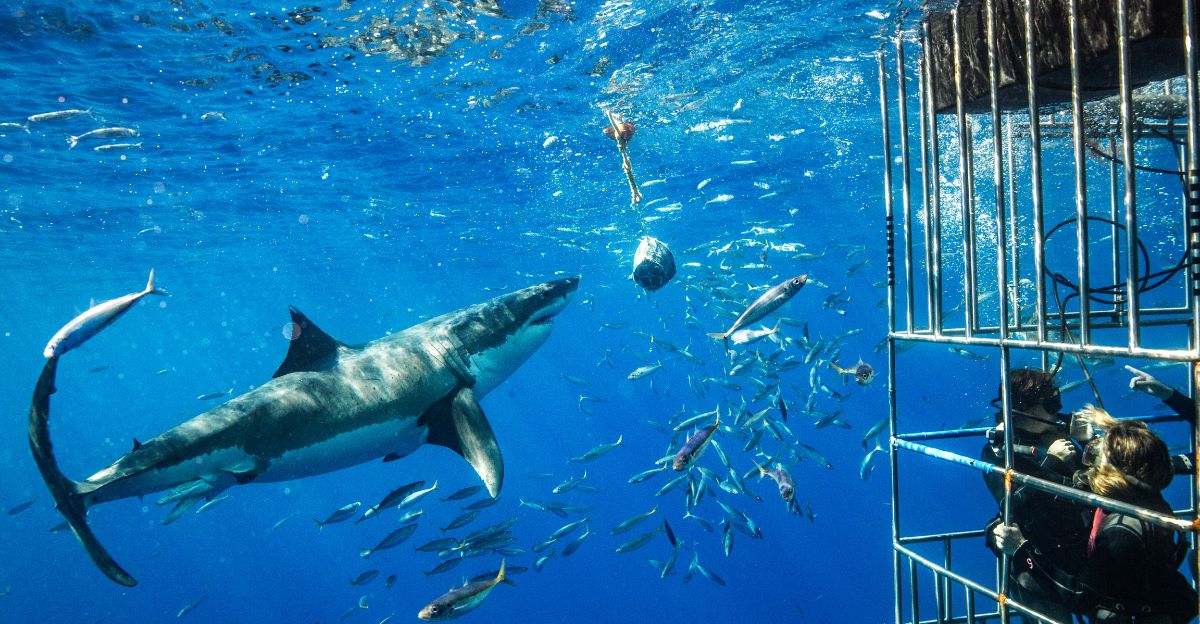
Great White sharks might look mean and powerful, but they face a few challenges even though they’re at the top of the food chain. Human activities are the primary drivers of their decline, with overfishing, bycatch in commercial fisheries, and the lucrative trade in shark fins, jaws, and teeth posing major threats to their populations.
Despite international protections and some conservation successes in places like South Africa and California, the great white shark remains listed as “Vulnerable” globally. “Catching an adult male shark in January was a new data point for us,” Dr. Newton noted. “We were really excited to catch him, tag him, sample him, and release him.”
Explore more of our trending stories and hit Follow to keep them coming to your feed!

Don’t miss out on more stories like this! Hit the Follow button at the top of this article to stay updated with the latest news. Share your thoughts in the comments—we’d love to hear from you!







